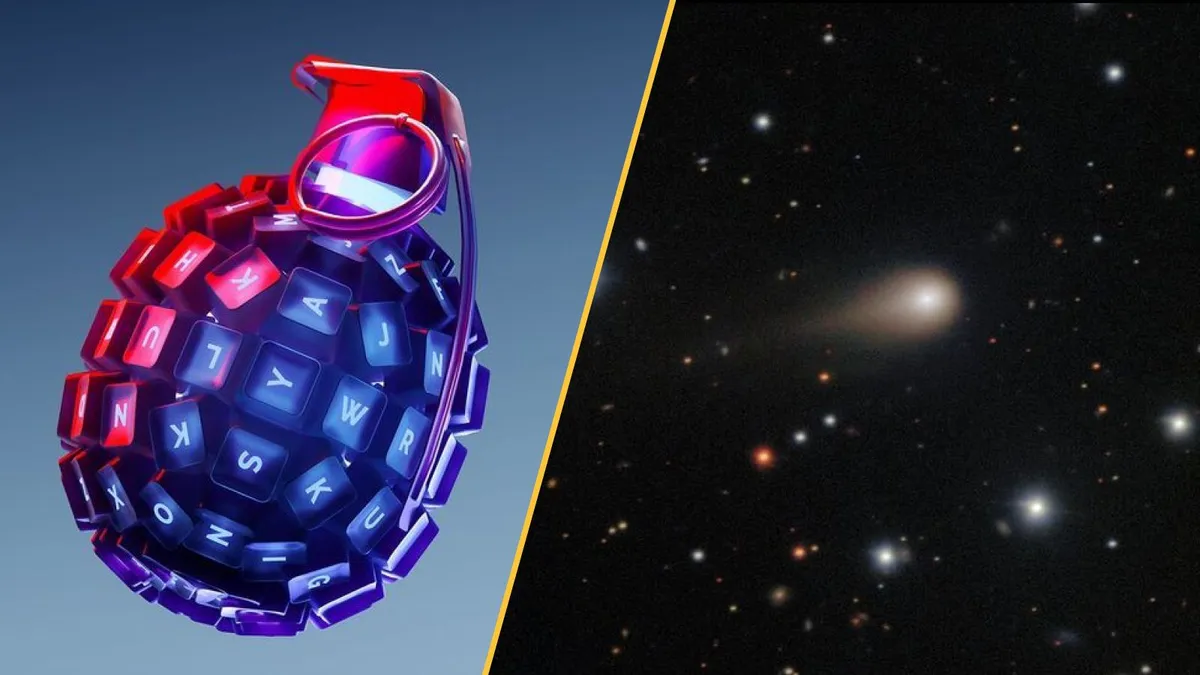
This week in science news was filled with extraordinary astronomical discoveries, highlighted by significant findings regarding the origins of the comet 3I/ATLAS. This remarkable comet, an interstellar interloper hailing from the depths of our galaxy, was first observed in late June. Recent research has provided fascinating insights into its potential age and origin, suggesting it could be a relic from the early universe, making it potentially billions of years older than our own solar system.
Scientists have determined that the comet most likely originated in the far reaches of our galaxy. Alongside this revelation, astronomers have noted its unusual characteristics, including a striking observation of the comet ejecting water in vast quantities, resembling a fire hose, long before it approached the sun. Researchers are diligently monitoring this intriguing object, utilizing the European Space Agency's (ESA) Mars spacecraft to capture unprecedented views of its bright coma.
In addition to the findings about 3I/ATLAS, this week unveiled astonishing discoveries from even greater distances. Notably, astronomers achieved the first radio telescope imaging of two black holes in orbit around each other. Furthermore, tentative evidence supporting the existence of controversial dark matter stars has emerged, and the James Webb Space Telescope has validated Einstein's theories, detecting an impressive array of gravitational lenses.
In a fascinating turn of events, researchers have uncovered a strange gravity signal emanating from deep within Earth, first detected nearly 20 years ago. This anomaly, which extended across a distance equivalent to the entire continent of Africa, coincided with a geomagnetic jerk in Earth's gravitational field back in 2007. Despite the signal and the geomagnetic jerk persisting for about two years, it wasn't until 18 years later that scientists identified this anomaly within data collected by satellites monitoring Earth's gravitational field.
Experts believe this peculiar gravity anomaly may stem from an unknown geological process near Earth's core, likely caused by a rapid redistribution of mass within the planet's deep mantle. However, further research is necessary for scientists to fully comprehend these hidden geological processes and their broader implications.
In other Earth science news, researchers made several noteworthy discoveries:
The Coral Triangle: A massive hidden 'Amazon' beneath the sea, exhibiting surprising resilience to climate change. Gold nanoparticles found in spruce tree needles, revealing new insights into plant biology. A research study disclosed that the Red Sea underwent one of the most extreme environmental events on Earth around 6 million years ago.This week, we also delved into the question, "Who truly discovered America?" Contrary to popular belief, Christopher Columbus was far from the first individual to set foot in America. This exploration led us on a 23,000-year journey through humanity's prehistoric past, unveiling encounters by Native Americans, Vikings, and Polynesian seafarers long before European arrival.
In more alarming news, scientists have developed an AI capable of designing entirely new viruses, raising concerns about the potential for creating devastating bioweapons. These viruses, known as bacteriophages, target bacteria rather than humans. While researchers have implemented measures to prevent the design of harmful pathogens, the implications of such technology continue to provoke discussion about the risks associated with AI.
Though the immediate threat appears limited due to current restrictions, the lack of comprehensive AI regulation raises valid concerns about possible future dangers. In the quest to combat antibiotic-resistant superbugs, the potential benefits of this research must be carefully weighed against the risks it may pose.
This week also saw significant advancements in various fields of science:
Robots received a major intelligence boost from Google DeepMind, with new models enhancing machine understanding of the world. Three scientists were awarded the Nobel Prize in Chemistry for their work on materials related to 'Harry Potter.' A new species of Jurassic 'sword dragon' has been discovered, shedding light on evolutionary mysteries. New analyses reveal that Shackleton's infamous ship, the Endurance, had multiple structural deficiencies.In a comprehensive long read, we explored the staggering economic toll of extreme weather events, which have caused over $100 billion in damages in the U.S. by mid-2025. The increasing frequency of wildfires, tornadoes, heatwaves, and floods underscores the urgent need to address the impacts of climate change.
If you're looking for engaging content to dive into this weekend, we recommend:
A book excerpt discussing how the next pandemic could be even worse than COVID-19, featuring insights from epidemiologist Michael Osterholm. An opinion piece on how the CDC is currently facing challenges due to administrative changes. An analysis of China's new commitment to reducing greenhouse gas emissions and its potential role as a global leader in climate action.Finally, experience the thrill of soaring through a 1,000-mile-long maze on Mars with a mesmerizing new satellite video released by the ESA. Based on data from the Mars Express spacecraft, this stunning animation invites viewers to explore the Red Planet's surface, showcasing ancient waterways, eroded islands, and a spectacular asteroid impact crater.